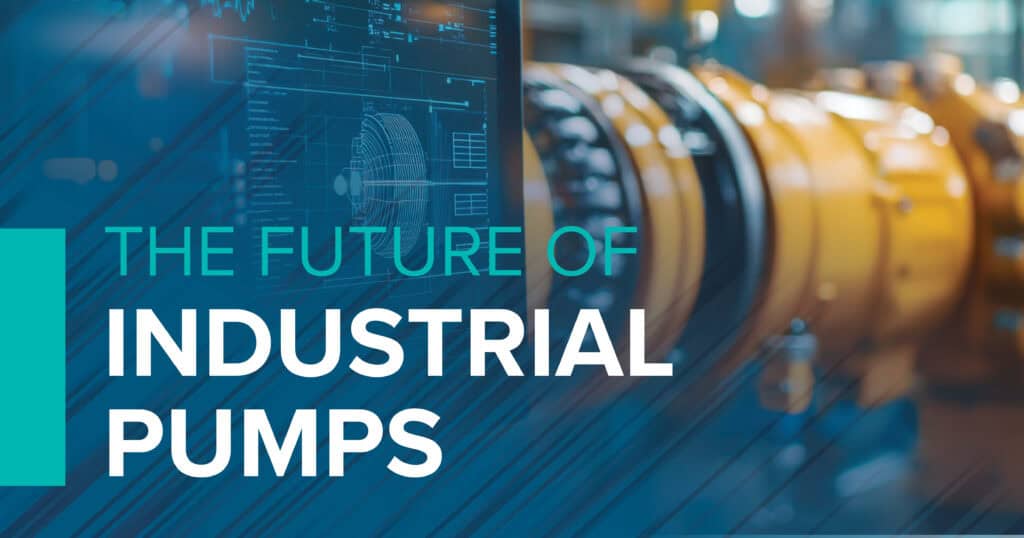Industrial pumps play a vital role across multiple sectors—from municipal water treatment and oil and gas to pharmaceuticals and food processing. As industries face increasing pressure to improve efficiency, reduce carbon footprints, and use real-time data, the pump sector is experiencing a wave of transformative technological innovation. Here’s a closer look at key emerging trends for industrial pumps:
AI‑Driven Pump Control and Predictive Maintenance
Artificial intelligence is reshaping how industrial pumps are operated and maintained. Advanced AI-based analytics platforms use data from pump operations—pressure, temperature, vibration, flow rate, and motor current—to develop digital twins. These virtual replicas detect subtle anomalies, forecast seal wear or bearing degradation, and trigger alerts before failures occur. AI-powered predictive maintenance avoids unplanned downtime, extends pump lifespan, optimizes service schedules, and reduces both maintenance costs and operational disruption.
Embedded Smart Sensors
Smart sensors embedded in modern pumps deliver unprecedented levels of insight. These compact, IoT-enabled devices measure flow rate, vibration, temperature, lubricant quality, and more. Thanks to advances in microelectronics and wireless connectivity, sensor-equipped pumps transmit real-time telemetry to plant dashboards or cloud systems. Operators can now remotely monitor performance and detect issues from afar—ideal for hard-to-access or hazardous environments. Additionally, sensor data enable dynamic control. The pump can automatically adjust speed or bypass settings in response to changing supply or demand.
Energy‑Efficient Designs and Variable Frequency Drives (VFDs)
Energy consumption remains a top concern in pump applications, especially those running around the clock. Engineers meet this challenge through optimized hydraulics and efficient motor-pump pairings. Low-slip impellers, advanced bearing materials, and aerodynamic casing improvements reduce mechanical losses. Meanwhile, variable frequency drives enable motors to dynamically match pump speed to actual process demand. The result: energy savings of up to 50 percent in many systems. In tandem with AI-based performance tuning, VFDs elevate sustainability while lowering operational costs.
Additive Manufacturing (3D Printing)
Additive manufacturing allows complex pump components—impellers, volutes, and custom casings—to be built with geometric shapes impossible via conventional casting or machining. This freedom leads to improved flow paths, reduced turbulence, and enhanced efficiency. On-demand 3D printing also supports rapid prototyping, quick replacement parts, and customization for niche applications (for example, corrosive fluid handling or abrasive slurries). This can lead to faster innovation cycles, lower tooling costs, and greater adaptability to specific industrial requirements.
Advanced Materials and Surface Treatments
Pump longevity is set to improve thanks to novel materials and surface technologies. Ceramic-based coatings, diamond-like carbon layers, and nanoparticle-enhanced alloys are dramatically increasing wear and corrosion resistance. That means more durable pumps in harsh chemical or abrasive settings. Engineers are also exploring lightweight composite materials and stainless steel–magnesium hybrids to strike a balance between weight, strength, and cost—particularly relevant for mobile or remote installations.
Digital Twin Integration and System-Level Optimization
Beyond AI and sensors, the future points toward end-to-end pump system optimization. Digital twins are being integrated into broader control systems, encompassing valves, piping, storage tanks, and even entire plant operations. By simulating real-world conditions, optimization engines can recommend whole-system improvements—from rerouting flow to shifting pump operation cycles. Together with machine learning, this leads to more precise control, reduced energy usage, and improved system resilience.
Embrace the Future: Gear Up for Smart, Sustainable Pumping
For businesses in manufacturing, water treatment, energy, and other sectors, the pump revolution is underway. AI-enhanced analytics, sensor-driven monitoring, energy-optimized hardware, and smart materials all converge to deliver:
- Greater efficiency through optimized operation and energy savings.
- Lower costs via reduced maintenance and longer equipment life.
- Higher reliability, with predictive fault detection and remote diagnostics.
- Sustainability gains from material improvements and system-level control.
Industrial players who adopt these trends will gain a competitive edge, offering greener, smarter, and more reliable pump solutions. At DXP Pacific, we’re ready to guide you through this next generation of industrial pump innovation. Whether you want to explore AI‑based condition monitoring, VFD integration, 3D‑printed components, or cutting‑edge materials, our team has the expertise to align emerging technologies with your operational goals. Contact us today to start.

